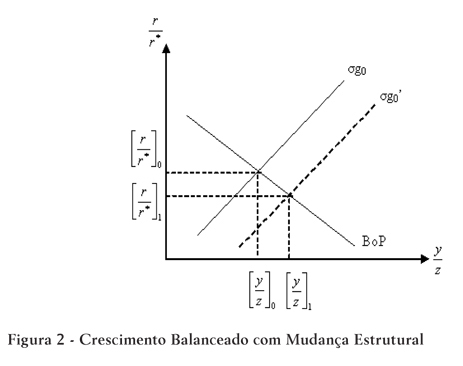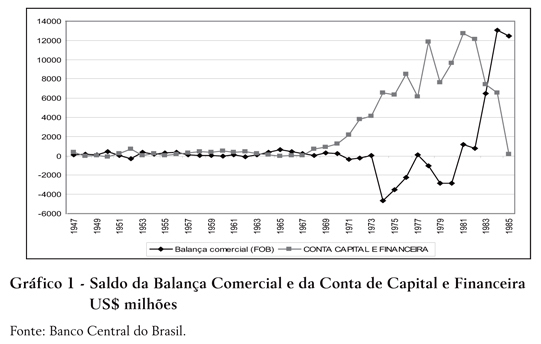The periods of fast growth in the Brazilian economy from the post-war until the end of the 1970s have been constrained by imbalances in the foreign sector. We propose in this paper a model, based on Kaldor, where capital accumulation, technological gap and long run external constrain are connected. Our hypothesis is that capital accumulation, under certain circumstances, can overcome external constrain if the accumulation effort promotes structural change increasing the importance of sectors technological-intensive. It is expected that the structural change in this direction will contribute to an increase in the income-elasticity of exports and to a decrease in income-elasticity of imports, resulting in the increase in the growth rate of real product compatible with the balance of payments equilibrium in the long run. The last part of the paper shows that the high investment rate observed in the Brazilian economy from the post-war period until the end of the 1970s resulted in the deepening of the import substitution process, what, in our interpretation, contributed to partially increase the long run growth rate of the Brazilian economy compatible with the balance of payment equilibrium.
structural change; technological progress; industrialization; external restriction






























